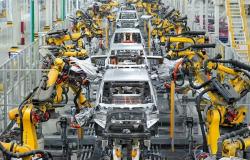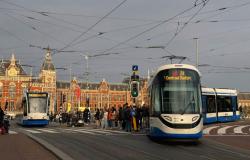Due to the upcoming, but still somewhat mysterious, motor vehicle tax for EVs, you would almost forget that LPG drivers will also pay considerably more MRB in the near future. In a notice that was still remarkably modest given the impact, the abolition of the G3 discount was mentioned as one of the upcoming measures, in addition to the ‘freezing’ of the classic car scheme in 1988 and an increase in the motor vehicle tax for campers and buses for the transport of horses. . Partly due to the rise of electrification, LPG as a car fuel has become less popular in recent years, but according to the Compendium for the Living Environment, there are still around 95,000 cars with a gas tank driving around in the Netherlands. Bad news for those who drive one: motor vehicle tax will increase considerably as of January 1, 2026.
Fixed discount
In principle, an LPG car in the Netherlands is subject to a sky-high motor vehicle tax rate, which in many cases is even higher than the MRB rate for a diesel, unless that diesel is subject to a particulate matter surcharge. Under those conditions, LPG would never have become very popular in the Netherlands, but fortunately we have had the G3 scheme since the mid-1990s. Since then, almost all LPG cars registered in the Netherlands have been equipped with a certain type of LPG installation, which makes them eligible for a significant discount on motor vehicle tax, which is therefore somewhere between petrol and diesel levels. In practice, this means a very low turning point, because LPG is considerably cheaper at the pump than petrol and so as an LPG driver you quickly earn back the relatively reasonable amount of extra MRB. Since 2015, stricter requirements have been imposed and the discount must involve a so-called R115 installation, but this does not matter for the MRB discount itself. In all cases this is a fixed amount per year and is therefore not a percentage of the ‘normal’ rate.
Because the discount is a fixed amount and not a percentage, smaller and lighter cars will be hit much harder when it is abolished than larger and heavier ones. See also the table below, in which we show the difference for a number of popular weight classes in the busy and expensive province of South Holland.
| Mrb rates per quarter, in South Holland | ||||
| Weight class | G3 | non-G3 | Difference in % | |
| 1051-1150 kg | €206 | €351 | 70.39% | Dacia Sandero |
| 1151-1250 kg | €252 | €397 | 57.54% | Dacia Jogger |
| 1251-1350 kg | €299 | €443 | 48.16% | Dacia Duster |
| 1351-1450 kg | €345 | €488 | 41.45% | |
| 1451-1550 kg | €392 | €534 | 36.22% | |
| 1551-1650 kg | €438 | €579 | 32.19% | |
| 1651-1750 kg | €484 | €625 | 29.13% | |
| 1751-1850 kg | €531 | €671 | 26.37% | |
| 1851-1950 kg | €577 | €716 | 24.09% | |
€117 per month
In all cases, the abolition of the G3 discount results in an absolute mrb increase of around €143 per quarter, with some minor differences per weight class. For a car weighing 1,900 kg, this is already a 24 percent increase, but that is nothing compared to the 70 percent increase that the driver of a small, light hatchback on LPG faces. Based on current rates, the mrb for a Dacia Sandero on LPG in South Holland will increase from €206 to €351 per quarter as of January 1, 2026, or from €68.66 to €117 (!) per month. Motor vehicle tax also tends to increase slightly every year, so you can bet that the real 2026 rate will be somewhat higher. Ouch!
Dacia
Of course, we don’t call it Dacia for nothing, because Renault and Dacia are the only brands that still supply cars with a factory LPG installation. Especially with Dacia, this fits very well into the budget picture, especially because a Dacia on LPG in the Netherlands is usually cheaper than the equivalent on petrol. No additional investment and therefore hardly a turning point, but that will change when the G3 discount is no longer available. Everything that applies to LPG G3 cars also applies to cars running on natural gas (CNG/LNG).
Dacia does not make any statements about the impact of the changing taxation regarding LPG cars on its sales. Bovag regrets the upcoming MRB changes and has tried to convince The Hague, but the decision has been different. “We think it’s a shame. After all, G3 is a cleaner variant and is aligned with the less clean one. In addition, LPG is cleaner than petrol or diesel, so it could be an interim solution in some cases until we achieve full electrification. It is important to know that this is a very small percentage: in 2023, only 0.6% of total new sales consisted of LPG cars. There are currently 96,683 LPG cars on the road, 1% of 9,433,734. So 1 in 100 cars. Our expectation was that the LPG market would shrink further. And of course this measure further contributes to that.”






